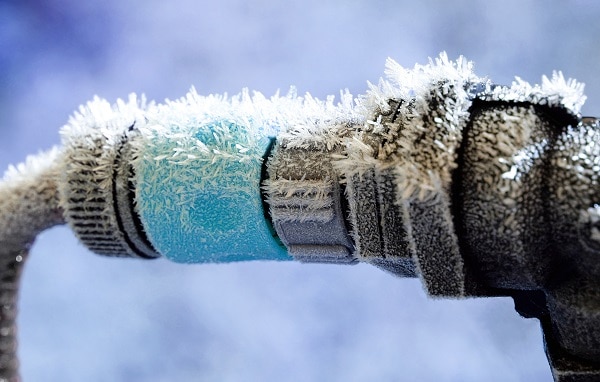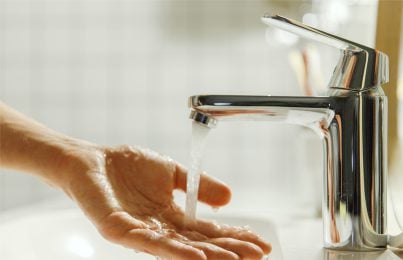Our Highly-Rated Winterizing Techniques: Five Ways to Secure Pipe Bursts
Our Highly-Rated Winterizing Techniques: Five Ways to Secure Pipe Bursts
Blog Article
We have found this great article relating to How to stop pipes from freezing during the winter listed below on the net and accepted it made good sense to relate it with you here.

All house owners who live in warm climates should do their best to winterize their pipes. Failing to do so can mean catastrophe like frozen, cracked, or ruptured pipes.
Activate the Faucets
When the temperature decreases and it seems as if the freezing temperature will last, it will aid to activate your water both indoors and outdoors. This will keep the water flowing via your plumbing systems. On top of that, the motion will certainly decrease the cold process. Significantly, there's no need to turn it on full force. You'll end up losing gallons of water this way. Instead, aim for concerning 5 declines per minute.
Open Up Closet Doors Hiding Plumbing
When it's cold outside, it would certainly be handy to open cupboard doors that are camouflaging your pipelines. Doing this little technique can keep your pipelines warm and also limit the possibly dangerous results of freezing temperature levels.
Take Time to Wrap Exposed Water Lines
One easy and great hack to heat up icy pipelines is to wrap them with cozy towels. You can cover them first with towels. After protecting them in place, you can pour boiling water on the towels. Do it slowly to allow the towels soak up the liquid. You can likewise use pre-soaked towels in hot water, just don't forget to wear safety handwear covers to guard your hands from the warm.
Attempt a Hair Clothes Dryer or Warmth Weapon
When your pipes are almost freezing, your dependable hair clothes dryer or warm gun is a godsend. If the warm towels do not assist remove any type of working out ice in your pipelines, bowling warm air directly right into them might help. You might finish up harmful your pipes while attempting to melt the ice.
When Pipes are Frozen, close Off Water
If you see that your pipelines are completely frozen or almost nearing that phase, turn off the major water valve quickly. You will normally find this in your basement or laundry room near the heater or the front wall surface closest to the street. Transform it off right now to stop further damage.
With even more water, more ice will certainly pile up, which will eventually lead to break pipes. If you are unclear about the state of your pipes this winter months, it is best to call an expert plumber for an examination.
All property owners that live in temperate climates need to do their best to winterize their pipes. Failing to do so can spell calamity like icy, broken, or ruptured pipes. If the hot towels do not help dislodge any type of working out ice in your pipelines, bowling warm air directly right into them might assist. Transform off the main water shutoff quickly if you observe that your pipelines are completely frozen or almost nearing that phase. With even more water, even more ice will load up, which will eventually lead to burst pipelines.
PREVENT YOUR PIPES FROM FREEZING THIS WINTER
A Leading Cause of Property Damage
When the weather is taking a deep nose dive into the cold dreary days, the risk of your pipes freezing and potentially bursting skyrockets. Unfortunately, during these cold dreary months, burst pipes are the most common denominator for property damage. The pipes that are most at the risk are those that are in areas where it is most cold in your home. For instance, pipes located in interior places such as basements, attics, and your garage. Unfortunately, that doesn’t mean that the pipes running through your cabinets or exterior walls can’t freeze. Good news, however, is that you can do things to help prevent pipes from freezing.
How to Prevent Pipes From Freezing
Once the temperature starts to drop during the winter, you should be taking the proper measures needed to ensure that your pipes stay warm and that there is circulation of water through them. Some steps that experts may recommend could go against your better judgement when it comes to saving water and heat. However, it would go without saying that when expenses are compared, damaged pipes could put a bigger dent in your wallet than a water bill.
What Can I Do?
Keep your garage door closed. This is very important, especially if you have water supply lines running through your garage. Open your kitchen and bathroom cabinets to allow warm air to circulate through them. Allow air circulation throughout your home. Keeping the interior doors open will once again allow the warm air to circulate inside your home. Ensure your thermostat is running the same temperature throughout the night and day. If you plan to be away from home during the cold months, set your temperature no lower than 55° F. This should provide enough heat to keep the pipes warm and prevent any remaining water inside the pipes from freezing. For more of a long-term solution, add insulation to attics, basement, and other crawl spaces around your home. By allowing your faucet to drip, it will alleviate pressure in the system. This is important because the pressure that is created between the blockage and the faucet can potentially cause the pipes to burst. Allowing the faucet to drip will prevent the pressure from building up, therefore keeping the pipes from bursting. Seal any cracks, openings, and crawl spaces around your home to prevent cold air from coming inside. This keeps your pipes-not to mention your home-warmer and less susceptible to issues caused by freezing temperatures. For the pipes in your home that are easily accessible, applying electrical tape to them might prevent them from freezing over. This is a quick fix, as you can apply the tape directly to the pipe. There are two options for heating tapes. One turns on and off by itself when it senses heat is needed. The other type of heating tape needs to be applied when heat is needed and removed when not necessary. If you have exposed pipes in your home, you can check this website to take a look at a few options that would be available at a shop near you.

We were made aware of that report on How to stop pipes from freezing during the winter through an associate on a different blog. Sharing is caring. Helping people is fun. Bless you for your time. Don't hesitate to check up our blog back soon.
Toilet overflow? Dial! Report this page